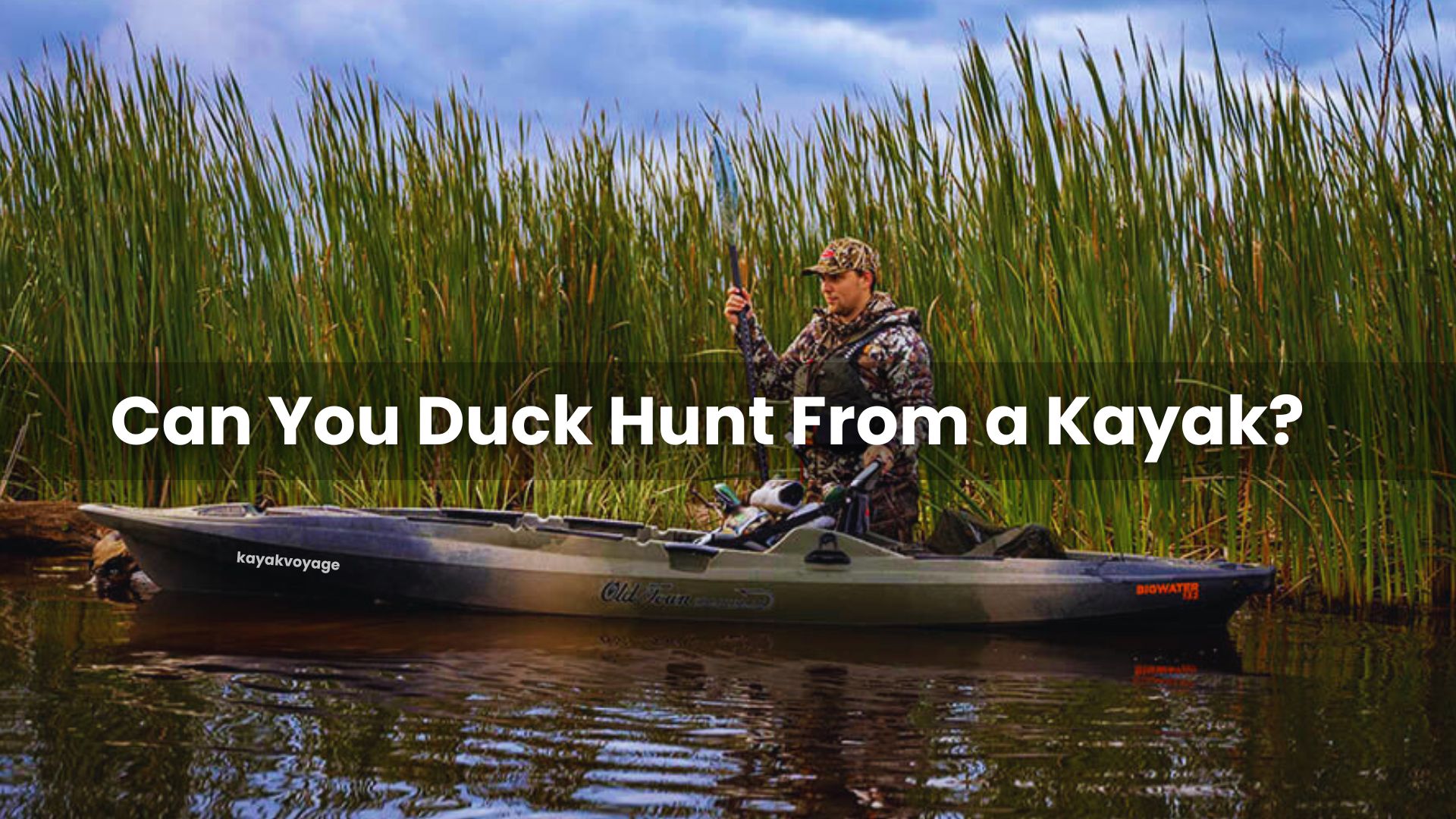Duck hunting from a kayak is a unique and exciting experience that combines the thrill of waterfowl hunting with the adventure of navigating through waterways.
This guide will explore the ins and outs of duck hunting from a kayak, covering the basics, tips, and best practices to ensure a successful and enjoyable hunt.
Whether you’re a seasoned hunter or just starting out, this comprehensive guide will provide you with the knowledge and skills needed to successfully duck hunt from a kayak.
- What You Need to Know Before You Start?
- Essential Gear for Kayak Duck Hunting
- Understanding Duck Migration Patterns
- Mastering the Art of Stealth
- Effective Calling Techniques
- Navigating Waterways and Reading the Water
- Identifying and Avoiding Hazards
- Emergency Procedures: What to Do in Case of an Emergency
- What are Some Safety Tips for Beginners in Duck Hunting from a Kayak?
- Conclusion
- Frequently Asked Questions
- Can You Duck Hunt From a Kayak?
- What Are the Advantages of Duck Hunting from a Kayak?
- What Are the Drawbacks of Duck Hunting from a Kayak?
- How Do You Choose the Right Kayak for Duck Hunting?
- How Do You Ensure Safety While Duck Hunting from a Kayak?
- Can You Shoot from a Kayak?
- Are Kayaks Suitable for Big Water?
What You Need to Know Before You Start?

Embarking on a duck hunting adventure from a kayak requires careful preparation and understanding of both kayaking and hunting regulations. Here’s what you need to know before you start:
Safety First: Always wear a personal flotation device (PFD) and be proficient in self-rescue techniques. The water can be unpredictable, and safety should never be compromised.
Know the Law: Familiarize yourself with local hunting regulations. This includes obtaining the necessary licenses, understanding bag limits, and knowing the legal hunting hours.
Selecting the Right Kayak: Choose a stable kayak that can handle the weight of you, your gear, and your potential harvest. A sit-on-top kayak is often preferred for its stability and ease of access.
Camouflage and Concealment: Your kayak should blend with the surroundings. Use camo patterns or natural materials to conceal your presence from wary ducks.
Gear Up: Essential gear includes a shotgun, ammunition, decoys, calls, and retrieval equipment. Waterproof bags and cases will protect your items from the elements.
Scouting: Pre-hunt scouting is crucial. Look for areas where ducks are feeding and resting, and plan your approach and exit routes.
Weather and Water Conditions: Check the forecast and be prepared for changes in weather. Understand the waterways you’ll be navigating, including currents, tides, and potential hazards.
Practice: Before the hunt, practice paddling with all your gear loaded. This will help you gauge the kayak’s stability and maneuverability.
Essential Gear for Kayak Duck Hunting
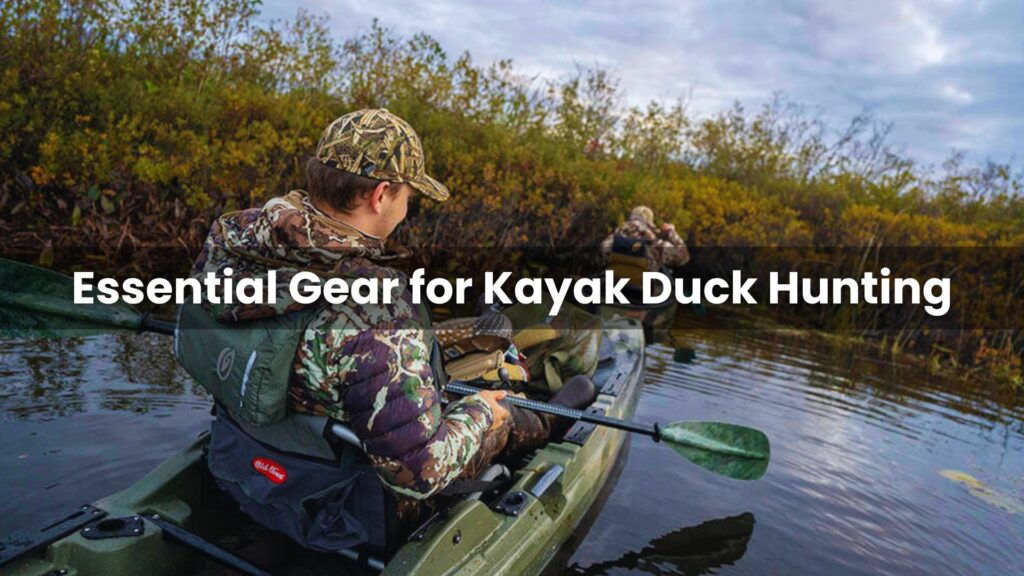
When setting out for a duck hunting expedition from a kayak, having the right gear is as crucial as the knowledge and skills you bring to the water. Here’s a detailed look at the essential gear you’ll need:
Kayak or Canoe: Your choice of vessel is paramount. A kayak designed for fishing or hunting is ideal due to its stability and storage options. Alternatively, a canoe can offer more space for gear and mobility.
Paddle: A reliable paddle is your primary mode of propulsion. Consider a paddle with a camouflage pattern to maintain stealth.
Life Jacket: A life jacket is non-negotiable for safety. Opt for one with pockets to keep small items within reach.
Waders or Chest Waders: Waders protect you from cold water and provide mobility in and out of the kayak. Chest waders are recommended for deeper waters.
Duck Calls: A variety of duck calls can mimic different species and calls, increasing your chances of attracting ducks.
Shotgun or Rifle: Your shotgun should be suitable for waterfowl hunting, with appropriate choke and camouflage. A rifle is not typically used for duck hunting due to safety and sportsmanship standards.
Ammunition: Use steel or other non-toxic shot as lead is often prohibited for waterfowl hunting. Carry enough for the day but be mindful of weight.
First Aid Kit: Safety first. A first aid kit should be on hand for any emergencies, including waterproof bandages and basic medications.
Each piece of gear should be chosen with care, ensuring it serves its purpose without hindering your mobility or stealth. Remember, the goal is to blend into the environment seamlessly while maintaining safety and efficiency. With the right gear, you’ll be well on your way to a successful hunt.
Understanding Duck Migration Patterns
To be successful in duck hunting from a kayak, it’s essential to understand the migration patterns, habitats, and behaviors of ducks. This knowledge will guide you to the right place at the right time.
Migration Patterns and Timing: Ducks migrate in response to changing seasons, typically moving southward as winter approaches. Familiarize yourself with the flyways the routes ducks follow and the timing of these migrations in your area.
Key Duck Habitats: Ducks favor wetlands, lakes, and rivers. Look for areas with abundant aquatic vegetation, as these provide food and cover. Marshes and flooded fields can also be hotspots during migration.
Duck Behavior and Feeding Patterns: Ducks are often active at dawn and dusk, making these ideal times for hunting. They feed on a variety of foods, including grains, insects, and aquatic plants. Observing local feeding areas can help you pinpoint where to set up your kayak and decoys.
Mastering the Art of Stealth
Stealth is a critical component of successful duck hunting from a kayak. Here’s how to master the art of stealth to approach and set up for the perfect shot:
Understanding Wind Direction and Speed: Ducks have a keen sense of smell, so approach against the wind to keep your scent away from them. Monitor the wind’s speed as well; strong winds can mask your movements, but they can also make controlling your kayak more challenging.
Identifying and Using Cover: Use natural cover to your advantage. Reeds, tall grasses, and overhanging branches can conceal your kayak. If natural cover is sparse, consider using a kayak blind to blend into the surroundings.
Moving Quietly and Slowly: Any sudden movement can alert ducks. Paddle gently, avoid hitting the kayak with your gear, and keep your movements inside the kayak smooth and deliberate.
Setting Up for a Shot: Once in position, remain still and wait for the right moment. Keep your shotgun in a ready position so you can aim and shoot quickly without excessive movement.
What are Some Common Mistakes Beginners Make in Stealth Hunting?
When beginners embark on stealth hunting, especially from a kayak, there are several common mistakes they might make. Here’s what to watch out for:
Overlooking the Importance of Camouflage: Beginners often underestimate the need for full camouflage. This includes not only clothing but also gear, kayak, and even the paddle.
Ignoring Wind Direction: Approaching ducks with the wind behind you can carry your scent to them, alerting them to your presence. Always approach against the wind.
Neglecting Noise Discipline: Small noises can be amplified over water. Beginners might accidentally knock paddles against the kayak or handle gear loudly, which can spook ducks.
Poor Decoy Setup: Setting up decoys requires strategy. Beginners might place them too close together or in unnatural patterns, which can deter ducks rather than attract them.
Lack of Patience: Stealth hunting requires waiting for the perfect moment to take a shot. Beginners may get impatient and move too much, revealing their position.
Inadequate Scouting: Not spending enough time scouting for the right hunting spot can lead to a less successful hunt. Understanding the area and duck patterns is crucial.
Insufficient Practice: Beginners might not practice paddling and shooting from a kayak enough before the hunt, leading to instability and missed opportunities.
Effective Calling Techniques
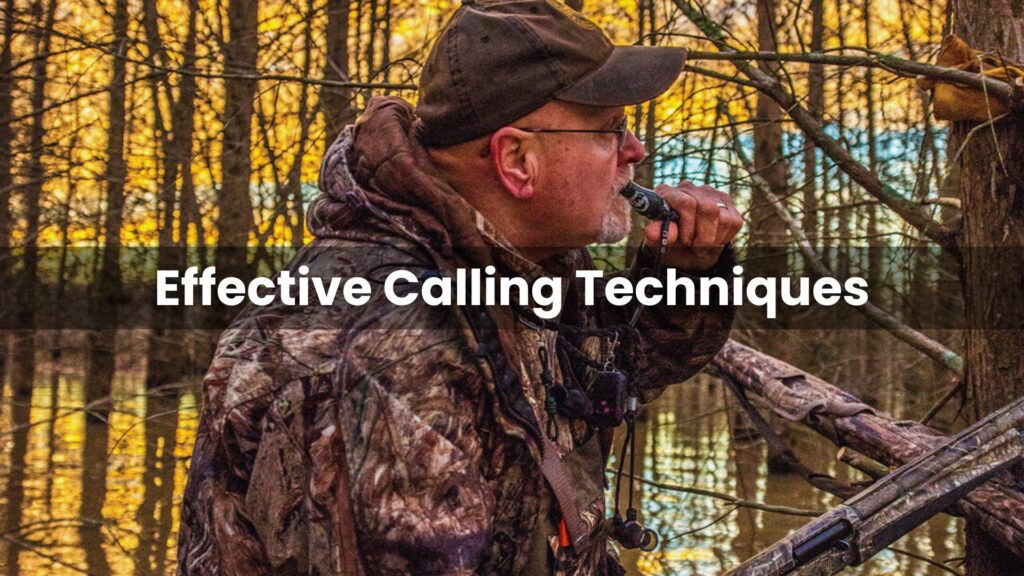
The art of calling is a vital skill in duck hunting from a kayak. It’s the bridge between you and the ducks, allowing you to communicate and lure them into range. Here’s how to refine your calling techniques:
Understanding Different Duck Calls: Ducks communicate through a variety of calls, each with a specific purpose. The quack is the most basic and versatile call, while the feed call simulates the sound of ducks eating. The hail call is loud and used at a distance, and the comeback call is used when ducks are leaving the area. Learn the nuances of each call and when to use them.
Mastering the Art of Calling: Like any instrument, practice is key to mastering duck calls. Start by listening to real ducks and recordings to understand the rhythm and tone. Practice your calls until they sound natural and not forced. Remember, the goal is to mimic the ducks, not to sound like a human blowing through a reed.
Using Calls to Lure in Ducks: Use your calls strategically. Start with a hail call to grab attention from afar. As ducks approach, switch to softer, more subtle calls like the quack or feed call. Watch the ducks’ behavior if they respond positively, continue; if they seem hesitant, adjust your calling technique.
What are Some Common Mistakes Beginners Make in Duck Calling?
Beginners in duck calling often encounter a few common mistakes that can hinder their success in luring ducks. Here are some of the pitfalls to avoid:
Overcalling: One of the most frequent errors is calling too much. Ducks can become suspicious if they hear incessant calling, which doesn’t mimic natural duck behavior.
Lack of Variety: Using the same call repeatedly can also be a giveaway. Ducks use a range of calls in different situations, so varying your calls can be more convincing.
Volume Control: Beginners sometimes call too loudly when ducks are nearby. Soft, subtle calls are often more effective as ducks approach.
Timing: Misjudging the timing of calls can lead to missed opportunities. Calls should be timed based on the ducks’ behavior and distance.
Tone and Rhythm: Getting the tone and rhythm wrong can make calls sound unnatural. Listening to real ducks and practicing can help improve this aspect.
Not Watching the Ducks’ Reactions: Ignoring the ducks’ responses to calls is a common oversight. Their reactions can tell you whether to continue calling or to change your strategy.
Navigating Waterways and Reading the Water
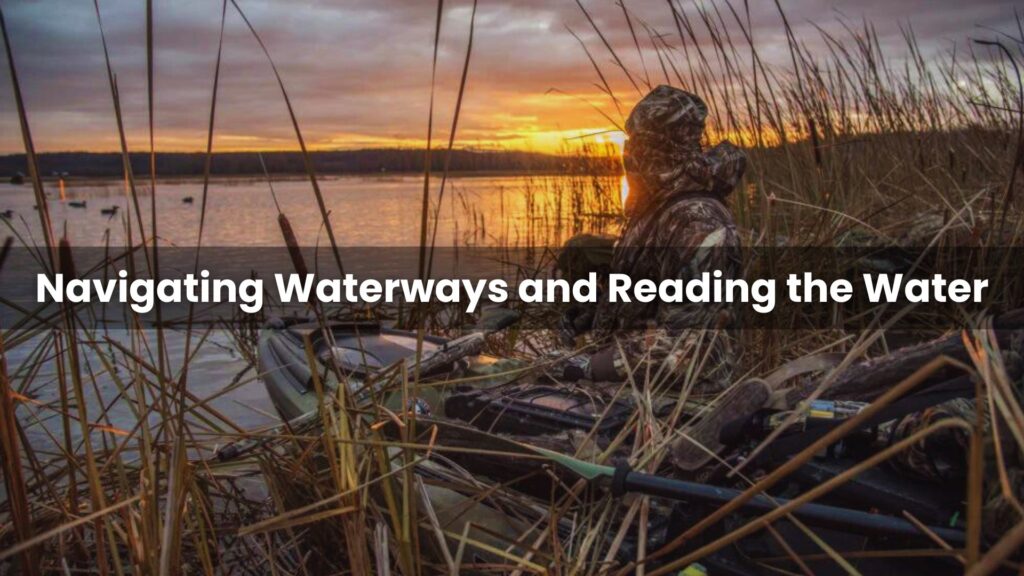
Successful duck hunting from a kayak not only requires stealth and gear but also a keen understanding of the waterways you’ll be navigating. Here’s how to read the water and use it to your advantage:
Understanding Water Currents and Depths: Knowledge of currents and water depth is essential for safety and effective hunting. Use a depth finder or chart to understand the water body’s topography. Currents can inform you about the areas where ducks might land or feed.
Reading Water Currents and Depths: Look for ripples, eddies, and water movement to gauge the currents. Depth variations can affect where ducks choose to dabble or dive for food. Shallow areas are often rich in food sources, making them ideal for setting up decoys.
Identifying Key Water Features: Features like points, coves, and inlets can be natural gathering spots for ducks. Also, submerged structures such as logs and rocks can attract ducks looking for shelter or food.
Navigating Through Waterways: Plan your route to minimize disturbance and maximize coverage. Paddle along the edges and use natural features for concealment. Avoid high-traffic areas where waterfowl might be wary due to frequent human activity.
Identifying and Avoiding Hazards
When duck hunting from a kayak, identifying and avoiding hazards is crucial for both safety and success. Here’s how to navigate these challenges:
Identifying Hazards: Be vigilant about potential dangers in the water. Rocks can puncture or tip your kayak, and weed beds can entangle your paddle or hide obstacles. Use a detailed water map or GPS device to mark known hazards before setting out.
Avoiding Hazards: Plan your route to steer clear of risky areas. Keep a safe distance from rocky shores and shallow regions where rocks may lurk beneath the surface. When approaching weed beds, slow down and gently paddle through to avoid getting stuck or disturbing the ducks.
Weather-Related Hazards: Sudden weather changes can create hazardous conditions. Be prepared to adjust your plans and seek shelter if necessary.
Human-Made Hazards: Be aware of other water users and avoid high-traffic areas. Also, watch for fishing lines and other equipment that could become entangled with your gear.
Emergency Procedures: What to Do in Case of an Emergency
When duck hunting from a kayak, being prepared for emergencies is crucial. Understanding emergency procedures and knowing what to do in case of an accident can make a significant difference in outcomes. It’s essential to have a plan in place before you find yourself in a critical situation.
Understanding Emergency Procedures: Before heading out, familiarize yourself with the basic emergency procedures specific to kayaking and duck hunting. This includes knowing how to handle capsizing, medical emergencies, and unexpected weather changes. Take the time to learn and practice self-rescue techniques, as well as how to signal for help.
Knowing What to Do in Case of an Accident: In the event of an accident, remain calm and follow the plan you’ve set. If you capsize, stay with your kayak if possible, as it will provide buoyancy and make you more visible to rescuers. Always wear a personal flotation device (PFD) and have a whistle or other signaling device easily accessible.
Having a Plan in Place: Your plan should include notifying someone onshore of your expected return time and location. Carry a waterproof bag with essential safety gear, such as a first-aid kit, a repair kit for your kayak, and a means of communication like a waterproof VHF radio or a cell phone in a waterproof case.
What are Some Safety Tips for Beginners in Duck Hunting from a Kayak?
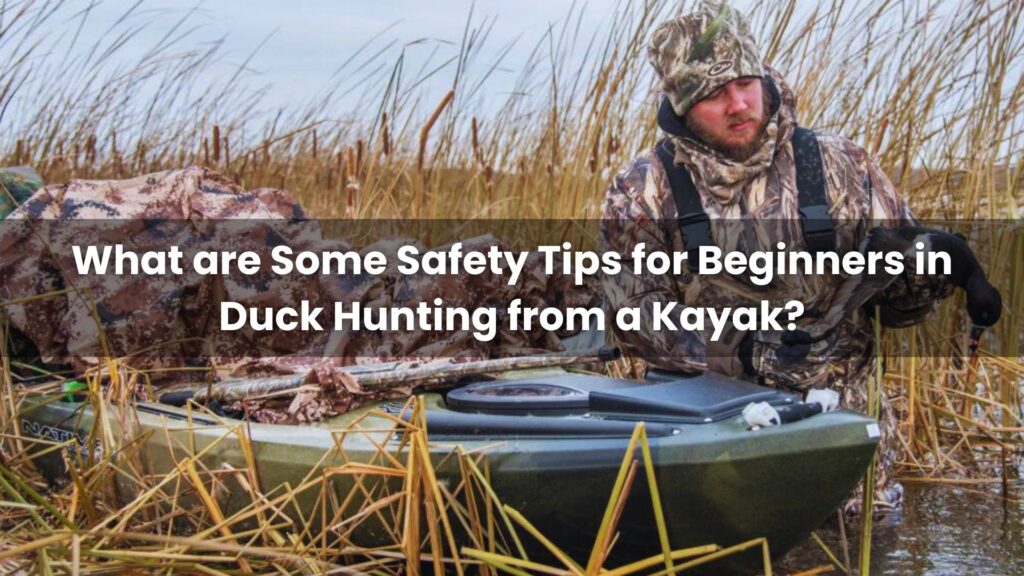
Safety is paramount when duck hunting from a kayak, especially for beginners. Here are some essential safety tips to keep in mind:
Wear a Personal Flotation Device (PFD): Always wear a properly fitted life jacket or PFD, even if you are a strong swimmer.
Check Weather and Water Conditions: Before heading out, check the weather forecast and water conditions. Avoid going out in adverse weather or when water levels are unsafe.
Know Your Limits: Stay within your physical limits and skill level. Don’t venture into waters or weather conditions that are beyond your capabilities.
Inform Someone of Your Plan: Let someone know where you’re going and when you expect to return. This is crucial in case of emergencies.
Carry a Communication Device: Have a waterproof and fully charged phone or a VHF radio in case you need to call for help.
Pack a First Aid Kit: Bring a basic first aid kit that includes waterproof bandages, antiseptic wipes, and any personal medications.
Stay Visible: Use a flag or reflective tape on your kayak to increase visibility to other boaters.
Avoid Hunting Alone: If possible, hunt with a partner. If you must go alone, take extra precautions and stay within areas you’re familiar with.
Practice Capsizing: Know how to self-rescue in case your kayak capsizes. Practice in safe conditions before your hunting trip.
Secure Your Gear: Make sure all your gear is securely attached to your kayak to prevent loss and to maintain stability.
Handle Firearms Safely: Always treat firearms as if they are loaded. Keep the muzzle pointed in a safe direction and only load when you’re ready to shoot.
Conclusion
Can You Duck Hunt From a Kayak? has been thoroughly explored and answered with a resounding yes. This guide has provided you with the necessary insights and techniques to safely and effectively engage in duck hunting from the compact and stealthy platform of a kayak. By adhering to the advice and strategies discussed, you can elevate your hunting experience, merging the quietude of kayaking with the exhilaration of waterfowl hunting.
Duck hunting from a kayak is not just a feasible option but also an enriching pursuit that brings you closer to the subtleties of nature. It requires preparation, respect for wildlife, and a willingness to learn, but the rewards are immense. As you paddle through tranquil waters with anticipation, remember that each trip is an adventure and an opportunity to hone your skills. Embrace the challenge, and may your time on the water be filled with the thrill of the hunt and the peace of the great outdoors.
Frequently Asked Questions
Can You Duck Hunt From a Kayak?
Yes, it is possible to hunt ducks from a kayak. Kayaks offer a unique advantage in getting to hard-to-access locations and providing stealthy transportation to your hunting spot. However, it is essential to consider the limitations of kayaks, such as their slow speed and limited range, when planning your hunt.
What Are the Advantages of Duck Hunting from a Kayak?
Kayaks have several advantages for duck hunting, including quiet operation, lightweight design, ability to run in extremely shallow water, and affordability. They also don’t require a trailer, making them a great option for those who want to hunt in remote areas.
What Are the Drawbacks of Duck Hunting from a Kayak?
Kayaks have some significant drawbacks for duck hunting, including slow speed, limited range, and difficulty shooting from the boat. They are also not suitable for big water and require physical effort to maneuver. Additionally, kayaks have limited space for decoys and can be challenging to conceal from the air.
How Do You Choose the Right Kayak for Duck Hunting?
When choosing a kayak for duck hunting, consider factors such as stability, ease of paddling, and concealability. A stable kayak is essential for hunting with a dog and for shooting from the boat. Look for a kayak that is lightweight and easy to conceal, and consider the tracking qualities if you plan to hunt in open water.
How Do You Ensure Safety While Duck Hunting from a Kayak?
Safety is crucial when duck hunting from a kayak. Always wear a life jacket and secure it properly. Keep an eye on the weather and learn to read marine weather forecasts. Employ common sense and be prepared to pull up stakes and leave if conditions become unsafe. Additionally, ensure you have the necessary safety gear, such as a first aid kit and communication devices.
Can You Shoot from a Kayak?
Yes, you can shoot from a kayak, but it requires careful planning and execution. It is essential to have a good gun holder to keep your hands free while paddling. Consider using an ATV-style gun mount and tying your gun to the mount with para-cord to prevent it from falling into the water. Shooting from a kayak can be challenging, especially if you are not experienced, so it is crucial to practice and develop your skills.
Are Kayaks Suitable for Big Water?
Kayaks are not suitable for big water, especially in windy or wavy conditions. They are better suited for small waters and marshes where you can get close to the action. If you plan to hunt in big water, consider using a larger, more stable boat designed for waterfowl hunting.

Nigel Foster, born in 1952, is an esteemed sea kayaker, known for being the youngest to kayak around Iceland. His journey in kayaking started at 15 in Brighton, England. With a career beginning as a trainee instructor in Sussex, he later pursued teaching after attending Redland College, Bristol.
Foster’s notable expeditions include navigating the challenging waters of Newfoundland and the Hudson Strait. Despite facing intense conditions, his passion for kayaking never waned. He holds several British Canoe Union qualifications and has significantly contributed to the kayaking community through teaching and committee work.
In 1985, Foster expanded his horizons by assisting an expedition in Iceland and later founded his own kayaking business, sharing his expertise globally.
